Enjoying Enchanting Tea Moments Everyday
Harmonizing spirit and mind through the joy of tea practices
Welcome to
!Today’s post is a little lifestyle piece about exploring personal growth and better relationships by practising a special tea ceremony called the Gongfu Tea (with more details below).
I recently visited Asia and went for a quick trip to Chaozhou, a city in Southeastern China with one of the best Chinese cuisines (in my view) and visited the place where my father was born. A more common word for Chaozhou is Chiuchow, and Chiuchow cuisine is famous all over Asia and possibly in parts of the West.
With the high-speed rail from Hong Kong, our boarding station, it took us less than 2.5 hours to get there. There are three classes, with prices ranging from $30 US dollars, $45, to $95 for second, first and business classes. We chose first class and got served a packet of interesting snacks (when we returned from China but not when we started in Hong Kong)! The train averaged 240km/hour - smooth and comfortable!
We first went to Chaozhou City’s West Lake (not as famous as the one in Hangzhou but is still beautiful and serene). Surrounding the lake are parks, bridges and pagodas for people to walk, exercise, meditate, practice dancing, etc.
Behind the lake are the most preserved hiking paths and mountains in Chaozhou.
After hiking up and down with my 86-year-old father, it was time to relax.
We stumbled into a huge tea place with a covered tatami sitting area on one side and bistro tables and chairs facing the West Lake on the other. But no one was around. What a pity, we thought.
Just when we were going to leave, an old lady came rushing out at the back followed by an old man and a young lady.
The old lady started setting up the umbrella for us as it was drizzling, ready to get some sales. The young lady turned out to be the tea master, and we thought we must be in luck as we got her to teach us how to brew tea and had the whole place to ourselves 😊!
It was a charming setting, and after we checked the price, which amounted to RMB130 (USD18!) for tea-tasting for 4 people for unlimited hours, we gladly sat down. This turned out to be the highlight of my trip!
The Story of the Gongfu Tea
First, please allow me to explain “kungfu tea” (or gongfu tea) (no, not what you think, we are not doing kung fu / martial arts 🏃♂️ while drinking tea 😆).
Gongfu tea (工夫茶, and in its modern form 功夫茶), originated from Chaozhou and Shantou (the Chaoshan region) in the Song Dynasty (960 to 1279), is the ritual preparation and presentation of tea.
Gongfu tea (工夫) means brewing tea the proper way with labour and time. The modern interpretation is brewing tea with skills.
The real essence of this is to become aware of the ‘cha qi’ (tea energy), so that tea is experienced beyond just taste, aroma, and appearance, but also how it affects one’s body and mind.~Teasenz
The Phoenix Mountains, the highest outlying Chaozhou, produces the famous Dāncōng Oolong tea which we can find everywhere in Chaozhou. There are more than 108 types of Phoenix Dancong Oolong tea, each categorized by its unique fragrance or “xiang”, size and shape of leaves, etc. Every family and shop in Chaozhou drinks gongfu tea multiple times a day. It is their daily ritual.
Chiuchow gongfu tea ceremony uses the following:
Gaiwan, the main vessel for brewing tea, consists of a cup with a lid and a saucer.
3 small cups (Chaozhou people arrange cups in three in the “pin” (品) formation, symbolizing the importance of a virtuous character).
Tea boat - perfect for holding cups, gaiwans, or teapots, collecting excess water, and allowing one to brew and pour tea freely.
Fairness pitcher (optional): this is a pitcher to collect the brewed tea from the gaiwan so one can distribute the tea evenly (aroma, richness, temperature, etc.)
Small teapot - instead of using the gaiwan and fairness pitcher, one can use a small teapot for tea brewing and pouring.
They are made of clay or porcelain.
The tea we were tasting is called “Duck Shit Aroma”, one of the most famous Dancong Oolong teas and the most legendary. The folklore goes: the villagers wanted to guard their prized tea grown in yellow-brown soil against theft and told outsiders the soil had lots of duck shit in it and hence the name 🐤! Due to the rich mineral soil, the tea tastes fruity, with almonds, gardenia, and honey notes. Later, it is also called “honeysuckle aroma” from the silver flower fragrance.
Practising Gongfu Tea Ceremony
Let’s see what we learned from our lady tea master.
Step 1: Get the tea set and snacks ready and boil the water to 100 °C. Spoon the tea leaves into the gaiwan. The glass pitcher on the left is the “fairness pitcher” for the even distribution of tea.
Step 2: Pour the boiling water onto the tea leaves. The first infusion is not for consumption but for rinsing the tea leaves. Notice the high tea leaves-to-water ratio. Let the tea leaves swirl with the hot water but steep only for about 3 to 5 seconds.
Step 3: Skillfully hold and tilt the gaiwan and pour the tea in a circular motion until all the tea is emptied from the gaiwan. The motion is swift and nimble but don’t burn yourself!
Step 4: Use the wooden tong to flip out the tea and rinse the tea cups, pouring the tea into the tea boat.
Step 5: Continue to pour the boiled water onto the tea leaves. Let it steep for 3 to 5 seconds, then empty and pour the tea into the cups for people to enjoy. We can also pour the tea into the fairness pitcher (the glass teapot) and allow everyone to smell the fragrance before pouring to taste!
Keep repeating steps 2 and 3. The tea leaves can be infused 7 to 15 times given how little time the tea leaves are steeped. I love the taste the third or fourth time, which is rich and flavourful. Each round of tasting presents a new experience.
The Chiuchownese also use boiling water to wash the cups after a few rounds of tea tasting, with the tea boat holding all the water, and we start all over again!
The tea master asked us to practice gongfu tea brewing and surfing after her demo. We were eager to try it and each managed to serve everyone a round.
I love the concept of Gongfu tea because it is meant for enjoying and sharing with others while it is also an enjoyable practice for ourselves.
Tea Culture for Everyday Living
While tea is prevalent in Chinese customs, Chaozhou Gongfu Tea was more than for drinking. In 2022, it was included in the UNESCO Intangible Cultural Heritage list. Gongfu tea culture represents the essence of the Chaozhou people and the harmonious relationship between humans and nature, facilitating personal growth, family relationships, and inner peace.
The Chaozhao people joked before the people went into a fight, they sat down to have a cup of tea, and by the time the tea had been consumed, the fight had been forgotten!
According to Mr. Chen, the president of the Chaoshan Tea Association in Shenzhen, brewing and enjoying gongfu tea is a way of respecting the elderly and instilling harmony among family members, friends, business partners, and even nations (Chinese President Xi and French President Macron enjoying gongfu tea together in 2023).
Brewing gongfu tea not only focuses our minds on the people we are serving but also brings us peace and harmony with ourselves and the people next to us. It goes beyond the taste and aroma—how the tea impacts the spirit, body, mind, and mood. It is like meditation in a cup.
After visiting my Dad’s birthplace and the people, I have a deeper appreciation of where his values about tea, food, and relationships have come from.
Gongfu tea truly brings people together and fosters a better mind towards life, i.e. treasure the small things in life and be in harmony with yourself and the environment — simple and unpretentious.
I now practise gongfu tea regularly with my newly acquired tea set, sprinkling peaceful and meditative moments throughout my day and week. I know that nothing can bring me peace but myself.
Are there special moments in your day?
If you read any lovely pieces on enjoying tea, please let me know.
Thank you for stopping by!

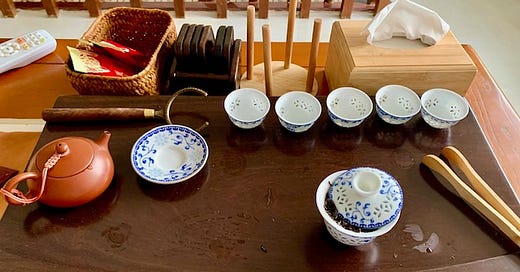



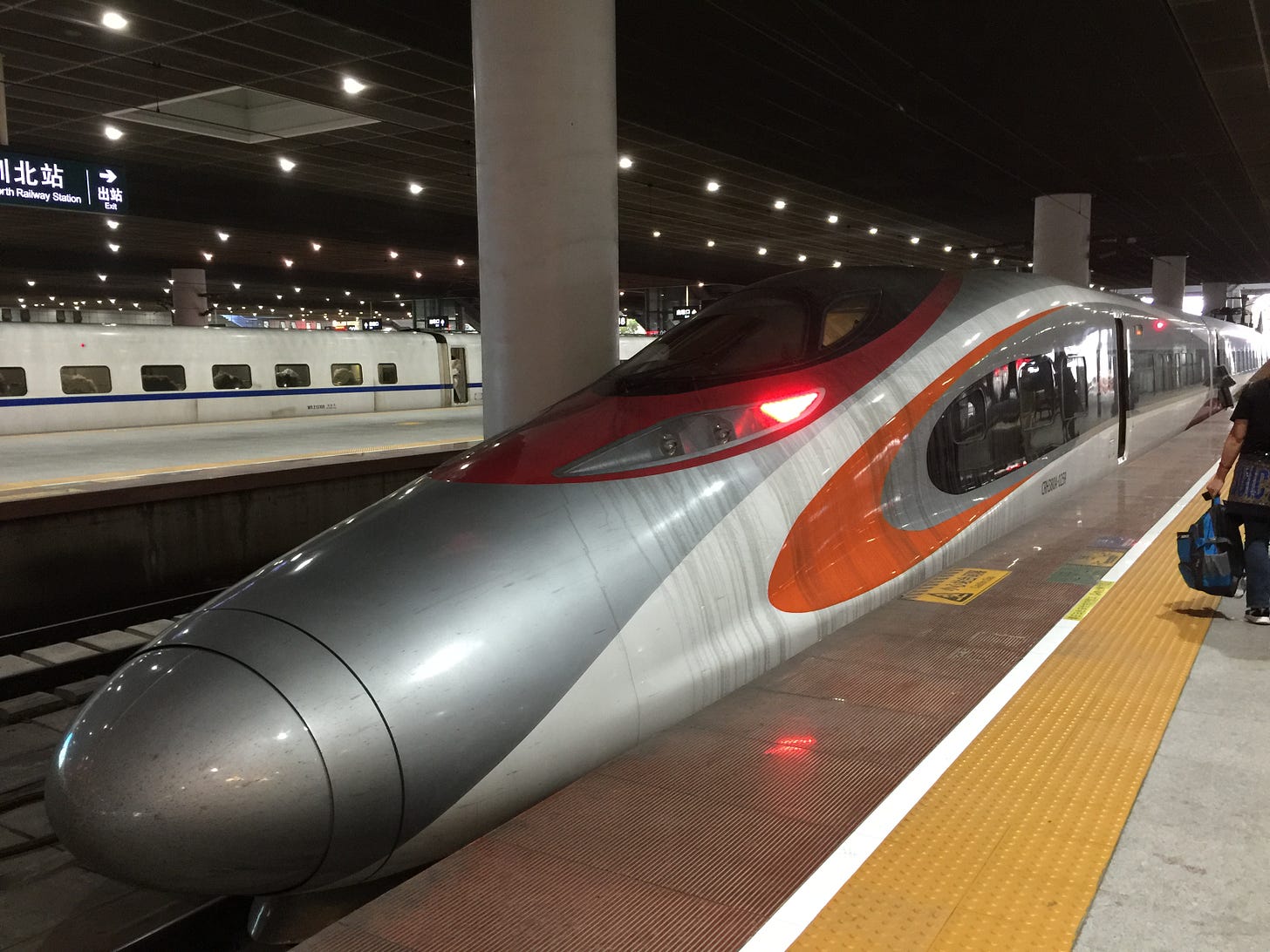
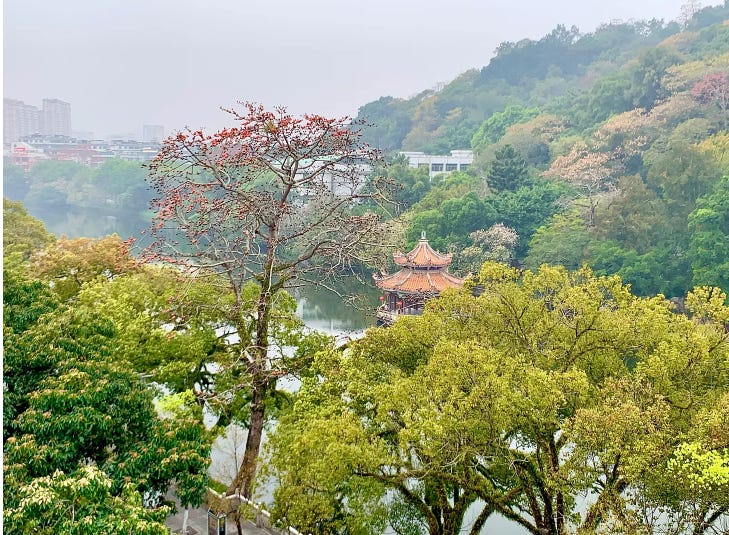

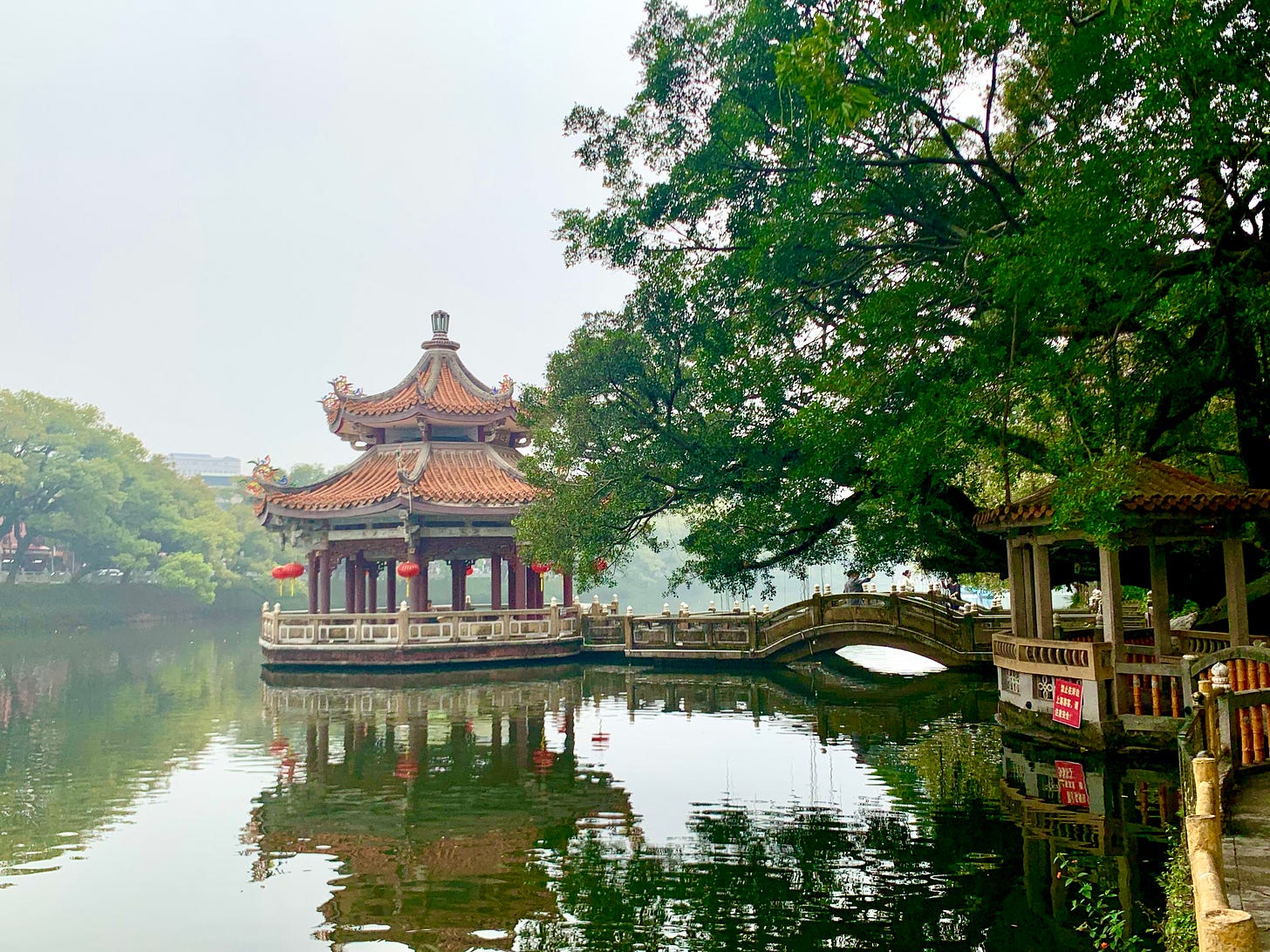
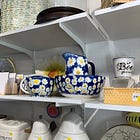

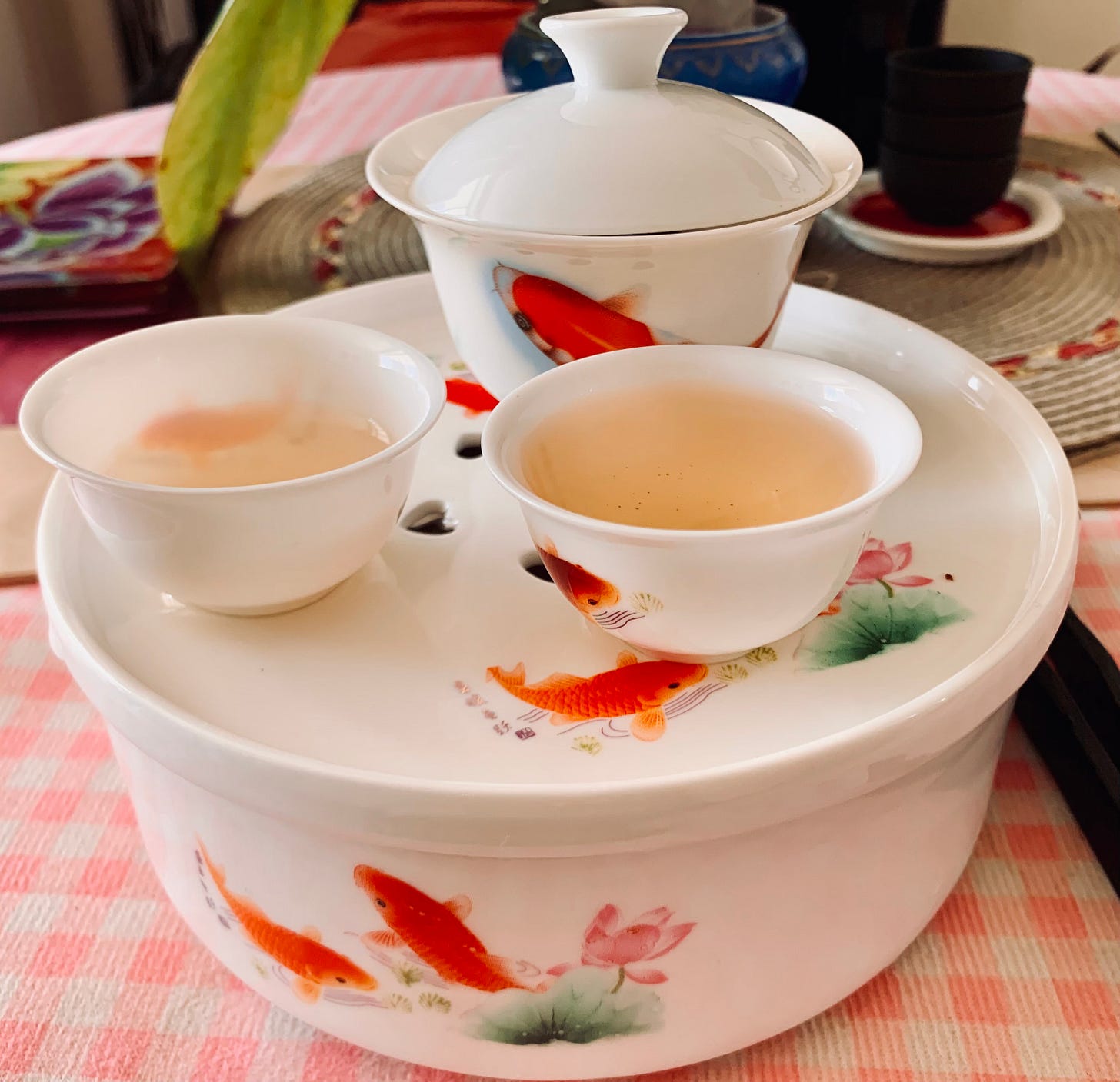
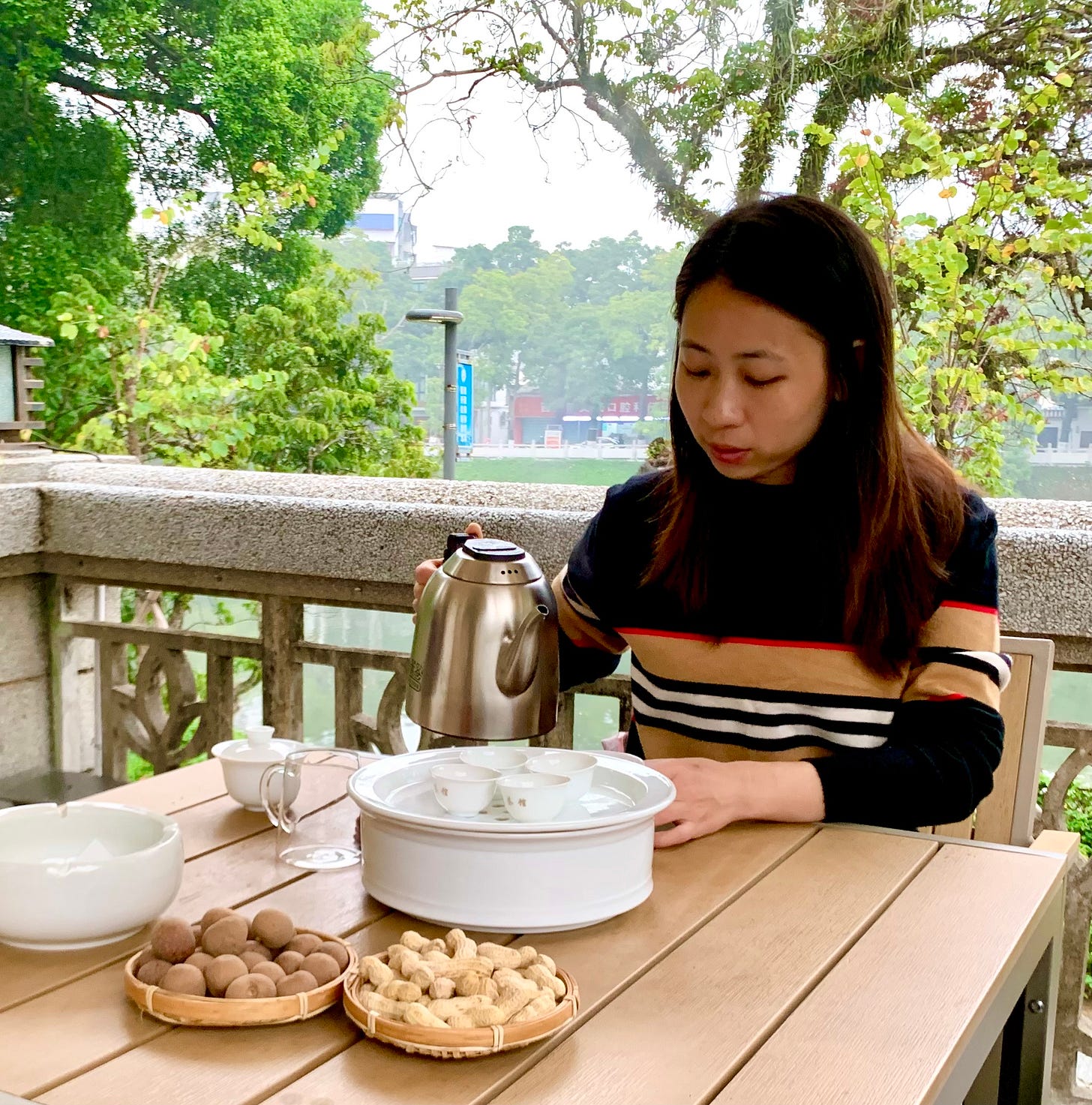
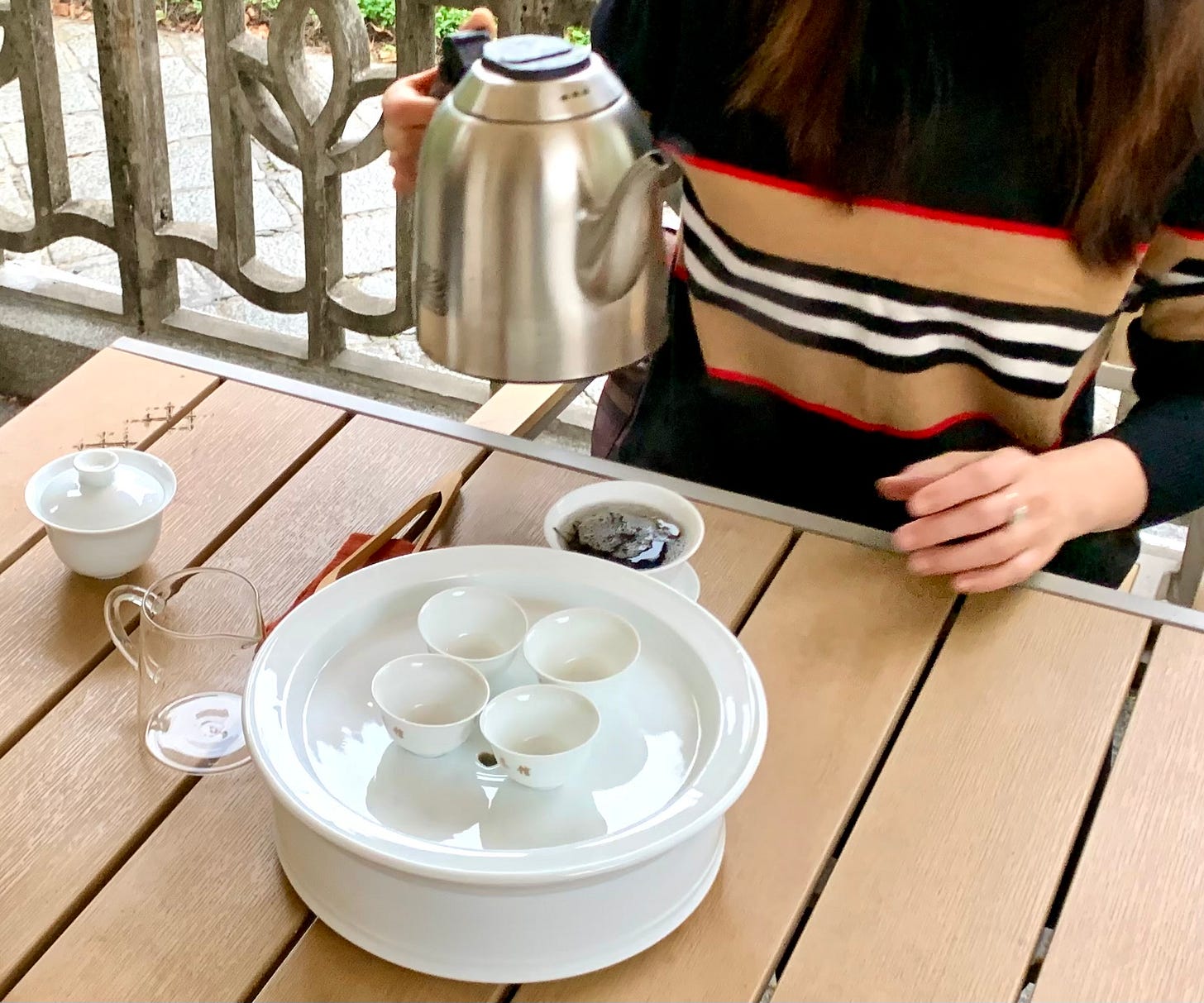

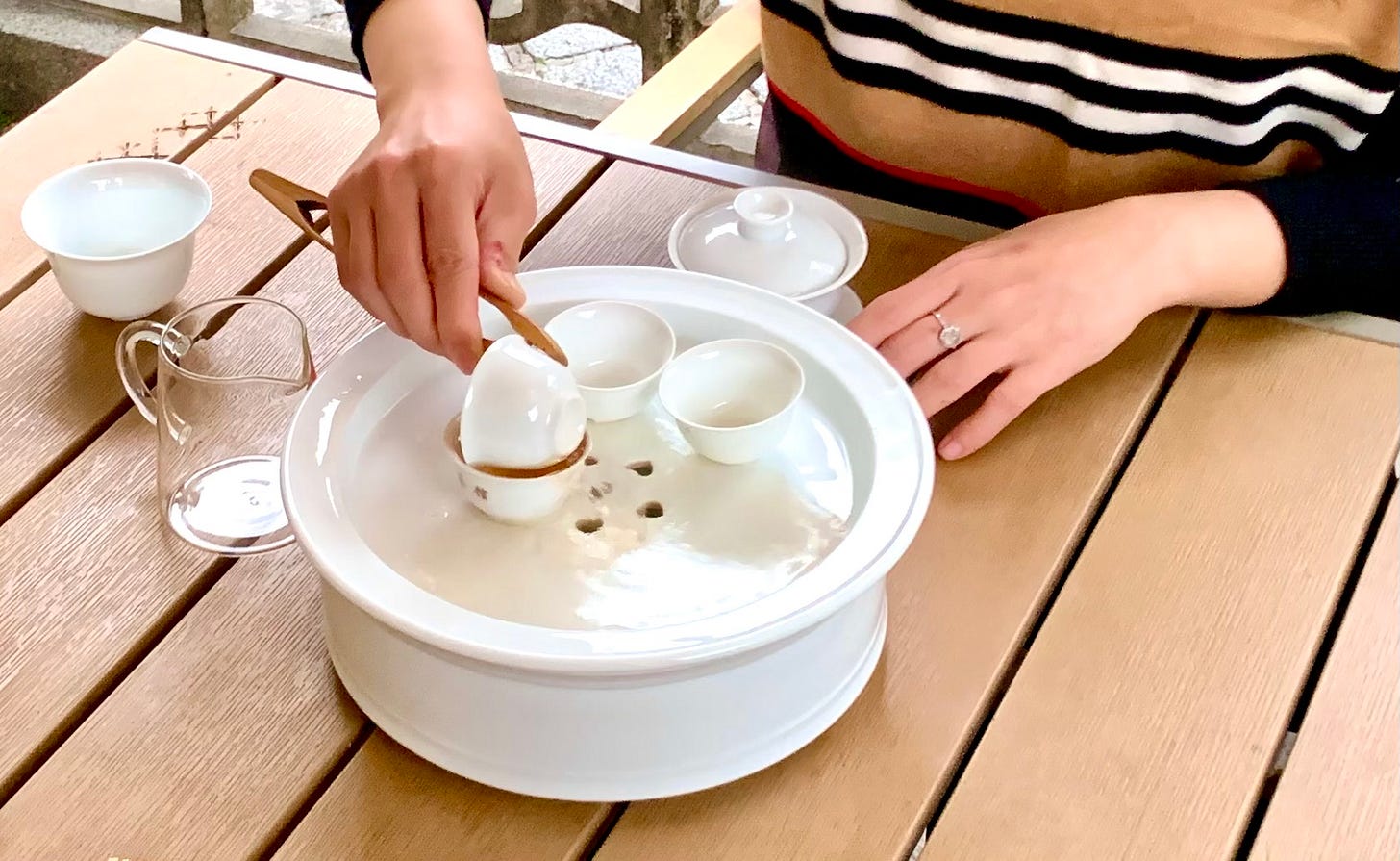
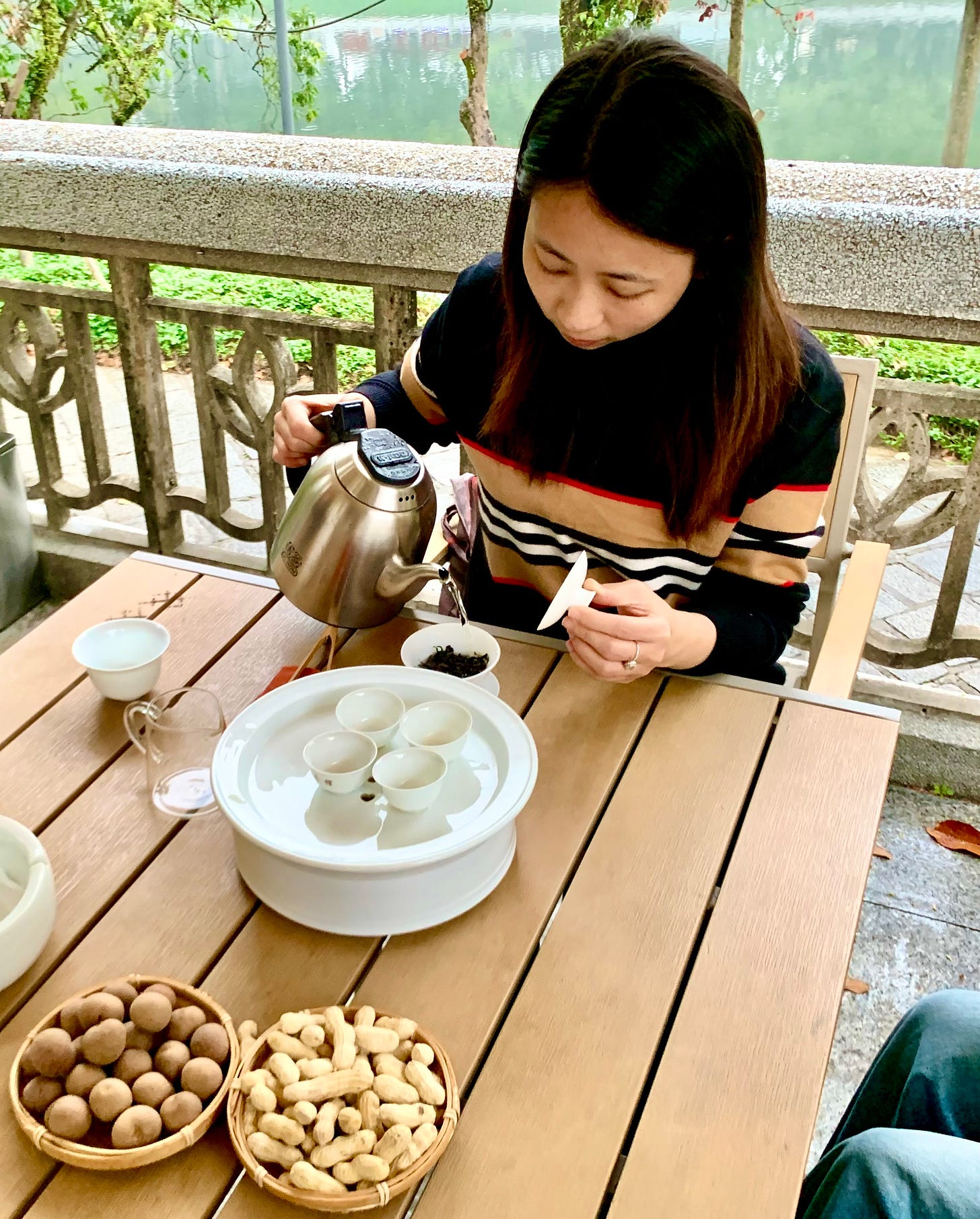

What a delightful read Marianne. Thanks for sharing your trip in Chaozhou and all the traditions.